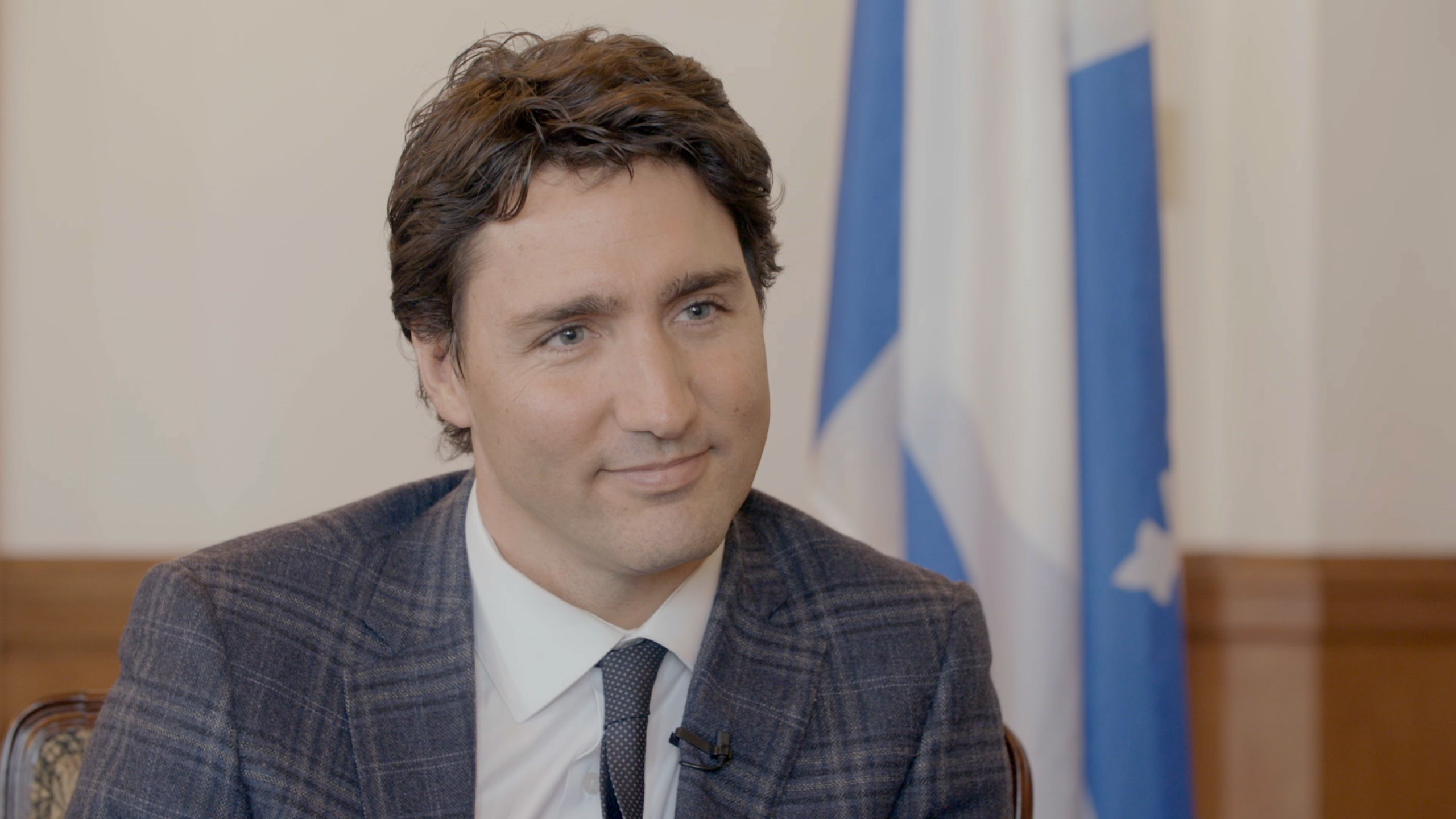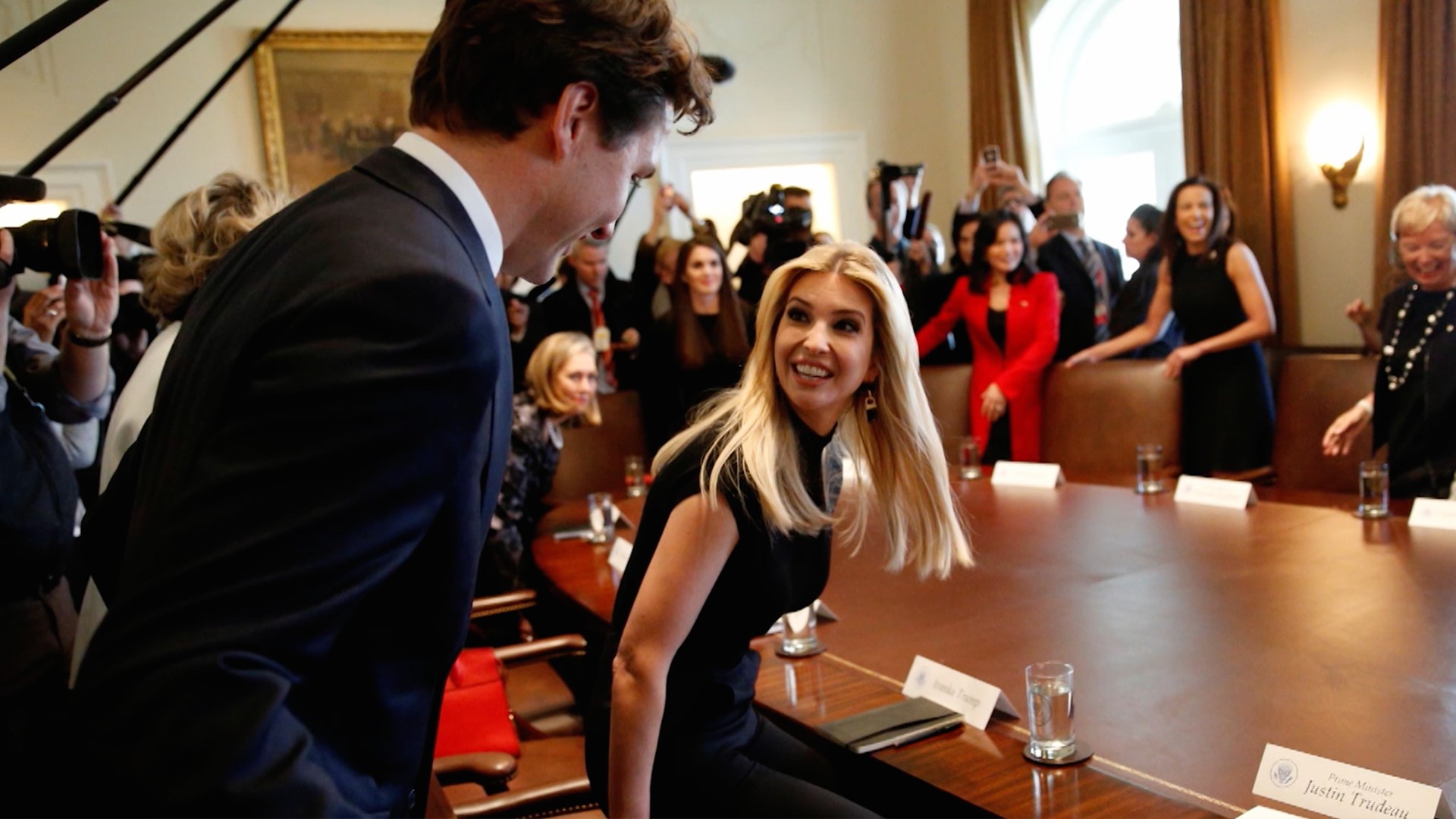Canadian Press
The Liberal government under Prime Minister Justin Trudeau, who came into office promising to usher in ‘sunny ways’ and a departure from the cynicism of the outgoing Conservative government, now finds itself facing nearly identical approval ratings as Stephen Harper was in 2014, according to a new poll released Monday.Trudeau’s approval rating fell to 37 per cent in the annual Mood of Canada survey, a poll conducted by Nanos Research. That’s down from 2016, when 43 per cent thought that Trudeau was doing a “very good” or “somewhat good” job leading the country, and a far cry from the 60 per cent approval rating he enjoyed following the election in 2015. Conversely, 39 per cent of respondents said that the Trudeau government was doing a “very poor” or “somewhat poor” job of running the country.The 37 per cent approval rating in the annual Nanos poll is the same that Prime Minister Stephen Harper held nearing the end of 2014.In 2014 Harper was on a public approval upswing. His approval rating had dropped as low as 26 per cent in 2013, as the Conservatives became embroiled in the sprawling Senate expense scandal. A measured response to the poll doesn’t mean it should be disregarded entirely. “What that number does show is a human element to Justin Trudeau,” Powers told VICE News. “If you’re looking at it from a Conservative perspective, what it does do is let Conservatives recognize that Trudeau isn’t invincible after all.”The Conservatives will likely continue to lean into the notes they have been playing through much of 2017, said Powers, adding that the attempt to get Trudeau to appear before the ethics committee will likely foreshadow what Canadians will hear in 2018. “The greatest Liberal vulnerability, Conservatives believe, is their blatant self-interest and sense of elitism,” said Powers. In other words, expect to see a Conservative party relying on its well-worn playbook of casting the Liberals as out of touch with average Canadians.For the NDP and their newly-minted leader Jagmeet Singh, there is also a chance to capitalize on Liberal vulnerability—but much of the work ahead will be about building unity in his caucus and recognition outside of Ontario. “I think Singh needs to calculate whether he comes into the House or not,” said Powers, “but they also have a lot of groundwork to do across the country. That isn’t glamorous, that isn’t pretty.”‘DON’T UNDERESTIMATE LUCK’Pollster Nik Nanos said that this poll reflected the kind of numbers one would expect to see in the middle of a government’s mandate. “I think this is indicative of the transition from the hope of the Justin Trudeau government to the reality of governing,” Nanos told VICE News. “It shouldn’t be surprising that after the Liberals have been in power and have had to make tough decisions, that the numbers are at that level.”
A measured response to the poll doesn’t mean it should be disregarded entirely. “What that number does show is a human element to Justin Trudeau,” Powers told VICE News. “If you’re looking at it from a Conservative perspective, what it does do is let Conservatives recognize that Trudeau isn’t invincible after all.”The Conservatives will likely continue to lean into the notes they have been playing through much of 2017, said Powers, adding that the attempt to get Trudeau to appear before the ethics committee will likely foreshadow what Canadians will hear in 2018. “The greatest Liberal vulnerability, Conservatives believe, is their blatant self-interest and sense of elitism,” said Powers. In other words, expect to see a Conservative party relying on its well-worn playbook of casting the Liberals as out of touch with average Canadians.For the NDP and their newly-minted leader Jagmeet Singh, there is also a chance to capitalize on Liberal vulnerability—but much of the work ahead will be about building unity in his caucus and recognition outside of Ontario. “I think Singh needs to calculate whether he comes into the House or not,” said Powers, “but they also have a lot of groundwork to do across the country. That isn’t glamorous, that isn’t pretty.”‘DON’T UNDERESTIMATE LUCK’Pollster Nik Nanos said that this poll reflected the kind of numbers one would expect to see in the middle of a government’s mandate. “I think this is indicative of the transition from the hope of the Justin Trudeau government to the reality of governing,” Nanos told VICE News. “It shouldn’t be surprising that after the Liberals have been in power and have had to make tough decisions, that the numbers are at that level.” Nanos drew a number of comparisons between Trudeau and Harper, but pointed out that similar approval ratings don’t necessarily mean the two governments have much else in common. “We saw that under the Harper government,” said Nanos. “We saw them doing marginally better after the election [in 2011], but the more they governed, they slid down.” The Liberals still have a comfortable edge in the ballot box, says Nanos.It’s important to remember, he added, that the popularity of Canadian governments are highly reactive to external forces, like the price of oil or economic strength. “You should not underestimate luck,” said Nanos. “If the economy does well, regardless of what goes on in the House of Commons, that will be good news for the government.” Nor do poll numbers reflect a straightforward narrative. “These types of numbers are a bit like political billiards,” Nanos said.For now, Trudeau and the Liberals seem to be sticking to what they know best, playing to their strengths. The prime minister is continuing on a town hall tour, with a stop in Quebec City this week. That strikes Powers as a calculated move. “The things that showcase [Trudeau’s] strengths are the things the Liberals want to continue to do,” he said. “They want to continue to have stories about their fearless leader sitting down with average Canadians.”
Nanos drew a number of comparisons between Trudeau and Harper, but pointed out that similar approval ratings don’t necessarily mean the two governments have much else in common. “We saw that under the Harper government,” said Nanos. “We saw them doing marginally better after the election [in 2011], but the more they governed, they slid down.” The Liberals still have a comfortable edge in the ballot box, says Nanos.It’s important to remember, he added, that the popularity of Canadian governments are highly reactive to external forces, like the price of oil or economic strength. “You should not underestimate luck,” said Nanos. “If the economy does well, regardless of what goes on in the House of Commons, that will be good news for the government.” Nor do poll numbers reflect a straightforward narrative. “These types of numbers are a bit like political billiards,” Nanos said.For now, Trudeau and the Liberals seem to be sticking to what they know best, playing to their strengths. The prime minister is continuing on a town hall tour, with a stop in Quebec City this week. That strikes Powers as a calculated move. “The things that showcase [Trudeau’s] strengths are the things the Liberals want to continue to do,” he said. “They want to continue to have stories about their fearless leader sitting down with average Canadians.”
Advertisement
For the Liberals, 2017 similarly filled with bad press—from the rocky roll-out of small business tax changes, to the scandal around finance minister Bill Morneau, to the ongoing Aga Khan imbroglio that Trudeau is currently being dogged by—has no doubt had an impact on Trudeau’s public image, and will likely be a point of focus for the party as they head into the back half of their term in office.Harper-esque approval numbers raises important questions—the most obvious among them being whether or not opposition parties will be able to capitalize on a government weighed down by scandal the way Trudeau and the Liberals were able to in 2015.‘NOT INVINCIBLE AFTER ALL’Tim Powers, a Conservative strategist who is now the vice chair of Summa Strategies, cautioned against over-reacting to the numbers, however, when drawing parallels with the Harper government. “Look at the trends in other polls. He’s still pretty high,” Powers said of Trudeau. For opposition parties, however, “what you want to do is look around and say, ‘where is he losing support? Is there an opportunity for us to take advantage of that?’ … You want to get real about what the numbers really say.”
Advertisement

